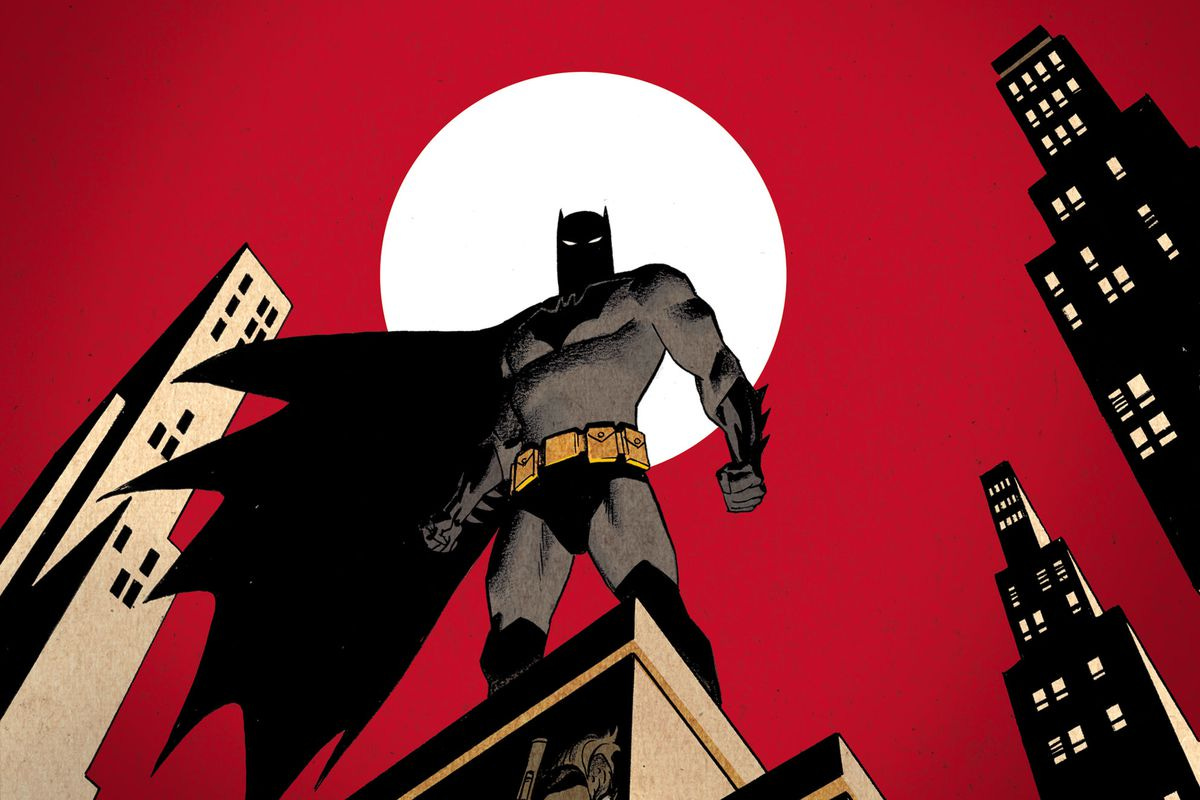TV Unspooled: Batman The Animated Series, “Heart of Ice”
So, anyone like Batman?
It’s another instalment of this feature where I take a look at an episode of a show I’ve never seen before. This week, it’s time for a classic episode of an iconic superhero cartoon, Batman: The Animated Series.

Batman: The Animated Series has quite a convoluted premise. It’s set in a fictional American city called Gotham, where the richest man in town is a billionaire entrepreneur named Bruce Wayne. Gotham is a crime-ridden city, not just with your every day criminals but all kinds of off the wall supervillainy. Wayne’s response is, and I promise you I’m not making this up, to dress up as a bat with all kinds of tech gear in order to fight the villains and protect the city. Nobody in Gotham knows this, as they just know the crime fighter as the mysterious “Batman”. I’m fine with animated shows going high concept, but this is a lot to take in.
Ok, ok, fine, I’ll drop the bit.
The nice thing about a Batman show is that you can watch it for the first time and already pretty much “get” the entire set up. The show as I understand it follows a broad villain of the week format, and “Heart of Ice” gives us a good origin story for a certain Victor Fries. Mr. Freeze, as he’s better known, is someone I’ve only really come across from the 1997 Joel Schumacher classic Batman and Robin, with its obviously peerless performance from Arnold Schwarzenegger a fan favourite I’m sure. The core of the character is the same here, having failed to find a cure for his wife’s disease being the driving force towards supervillainy. What’s actually interesting is the addition of his former employer, GothCorp CEO Ferris Boyle. In this telling, Fries was a scientist trying to save his wife after hours with his employer’s equipment, before Boyle ruins it all out of greed.
The most frequent complaint against the Batman character is that he’s a billionaire beating up poor people. This is a criticism I have a lot of sympathy for, though I’ve hardly delved into the comics enough to really have an informed opinion. That’s why it was nice to see something vaguely class conscious in “Heart of Ice”. Boyle uses the facade of compassionate capitalism to pursue his own agenda while screwing over his employees. This episode was made long before the current wave of vacuous tech CEOs, but it absolutely fits a template that applies today. We’re not given a clear indication as to what GothCorp is really doing, but it definitely feels as though it’s something exploitative to the environment.
The only problem, then, is that this is a Batman show. When Bruce Wayne is your protagonist, you’re inevitably trapped towards going to a “good billionaires and bad billionaires” narrative. Batman is going to save the day regardless. I’m sure other episodes explore it more, but we see so little of Wayne Enterprises here that it’s not clear just how different it is to GothCorp. We’re just told Boyle is bad and Wayne is good.
Additionally you have the question of the downtrodden villain. It’s a very common trope at this point to show the bad guy in a vulnerable position, having genuine grievances that push them towards evil, but it’s never my favourite thing*. Fries really is dealt a shit hand here, and his crime is mainly in going too far on his crusade for revenge. Which is obviously bad, and he ends up in Arkham Asylum for it, but I’m not sure he’s really any worse than Boyle, who just gets a stern telling off. The only difference is that Boyle is bad in a generic rich asshole sense, which makes everything he does pretty much legal.
My favourite thing in “Heart of Ice” was the really evocative animation. Whoever was responsible for the HD remaster here did an outstanding job, resisting the temptation to crank up the digital noise reduction and letting the whole thing keep its natural grain. I just wish other cartoons were given this much care. Visually, the show is full of dark shades of blue, grey and black that honestly feels like an influence on live action TV’s current lighting obsession. Of course, this is animation, so you have a lot more freedom in terms of how you “light” things without losing visual clarity. The popular Tim Burton Batman films of the time are the obvious point of comparison, and even if the creatives weren’t thinking about them, I’m sure execs were. If those films made it commercially viable to make Batman and Gotham look this dark, then putting it in a cartoon setting solidified it as the default mode for the franchise.
Is Batman: The Animated Series a turning point for how we think about the character? On one hand, this show aired right around the time Warner Bros. gave the movies Schumacher and brought everything into neon maximalism. But the darkness won in the end. There have been much darker takes on Batman in all sorts of mediums. But to give a darker take in a children’s cartoon is in so many ways bolder than Zack Snyder having Ben Affleck shoot a bunch of guys. This isn’t the property that made Batman dark. This is the property that made Batman dark everywhere, even when he’s for kids.
*Something I genuinely liked about the Star Wars sequel trilogy was how it flipped this. Kylo Ren is a rich kid with loving parents who never had to want for anything growing up. Yes, he did have his problems with Luke, but they’re pretty minor compared to a character like Mr. Freeze. The worst villains being rich guys who think they’re oppressed feels much truer to life than painting the poor and downtrodden as the bad guys.

